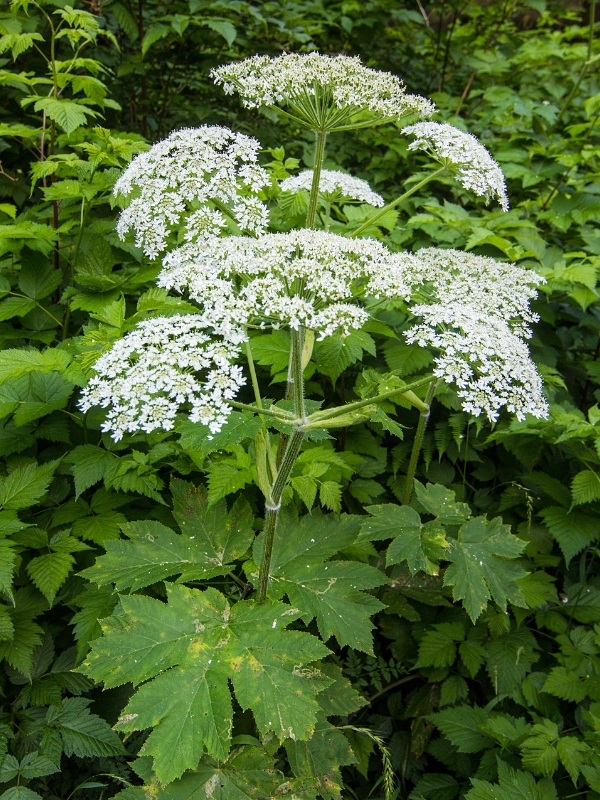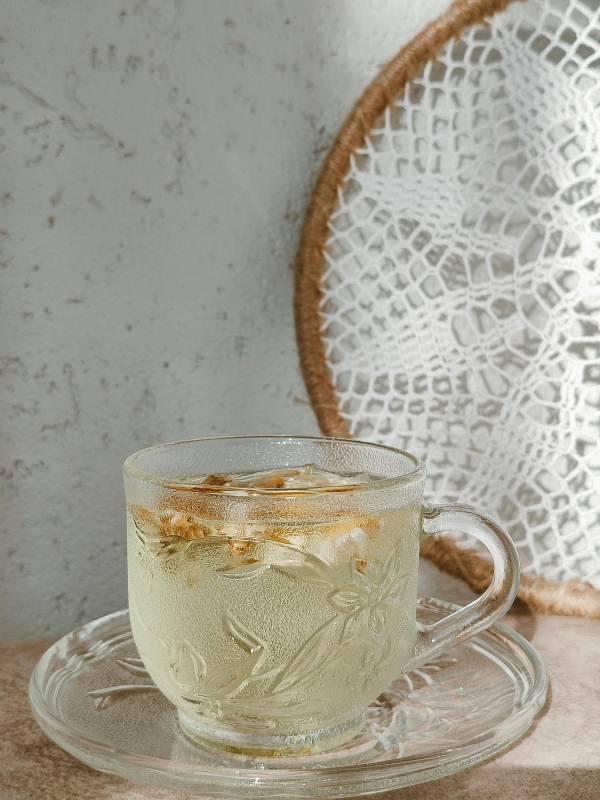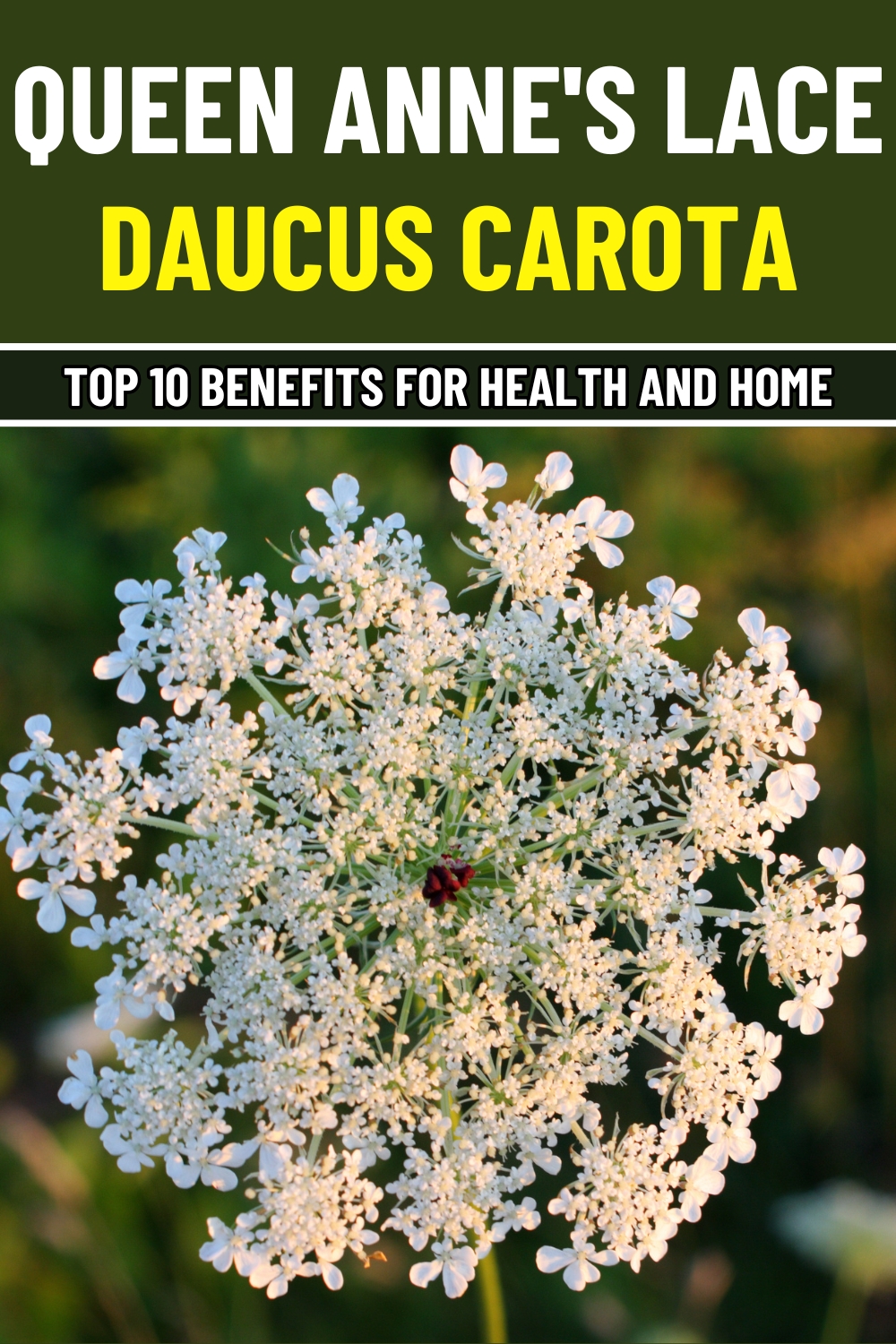Queen Anne’s Lace (Daucus carota), also known as wild carrot, has been used in traditional medicine for centuries, offering relief for digestive issues, kidney health, and skin ailments.
Packed with nutrients like beta-carotene and antioxidants, it supports overall wellness while benefiting pollinators and improving soil health.
Let’s explore the incredible benefits of Queen Anne’s Lace and how to incorporate it into your daily life.
#1. Helps Digestive Health
Queen Anne’s Lace is known for its carminative properties, helping to relieve bloating, gas, and indigestion. Its seeds stimulate digestive enzymes, promoting smoother digestion.
A 2020 study in the Journal of Herbal Medicine found that wild carrot seeds can effectively alleviate symptoms of gastrointestinal discomfort.
Additionally, the seeds contain essential oils that improve gut motility and support nutrient absorption.

#2. Promotes Kidney and Urinary Health
As a natural diuretic, Queen Anne’s Lace encourages eliminating excess water and toxins, supporting kidney detoxification, and preventing urinary tract infections (UTIs).
A study in Phytotherapy Research highlighted the diuretic properties of wild carrots, making them beneficial for kidney health.
Drinking a tea made from its seeds can help flush out toxins and support urinary health.
#3. Boosts Skin Health
The antibacterial and anti-inflammatory compounds in Queen Anne’s Lace make it an excellent remedy for skin conditions like rashes, eczema, and minor wounds.
Moreover, its essential oils soothe irritation and promote faster healing.
You can apply an infused oil or poultice from the flowers to improve skin clarity and soothe irritation.

#4. Improves Eye Health
Rich in beta-carotene, the roots of Queen Anne’s Lace contribute to vision health by supporting retinal function and preventing age-related macular degeneration.
Beta-carotene in the roots is converted into vitamin A, which is essential for maintaining healthy eyesight.
#5. Acts as a Natural Antihistamine
Queen Anne’s Lace can reduce seasonal allergy symptoms like sneezing and congestion thanks to its anti-inflammatory and antihistamine properties.
Drinking tea made from the plant’s flowers during allergy season can provide relief naturally.

#6. Provides Antioxidant Support
The plant’s seeds and roots are rich in antioxidants, which protect cells from oxidative damage and reduce the risk of chronic diseases.
A 2019 study in Antioxidants Journal reported that beta-carotene and flavonoids in wild carrots neutralize free radicals effectively
#7. Supports Hormonal Balance
Traditionally, Queen Anne’s Lace seeds have been used as a natural contraceptive and to regulate menstrual cycles.
While these uses require further scientific validation, the seeds contain bioactive compounds that influence hormonal function.
This use is not a reliable method of contraception and should only be explored under expert guidance.

#8. Attracts Pollinators
The flowers of Queen Anne’s Lace are a vital nectar source for bees, butterflies, and other pollinators, contributing to biodiversity and healthier ecosystems.
Planting Queen Anne’s Lace can enhance your garden’s ecological balance.
#9. Acts as a Natural Soil Improver
When used as green manure or compost, Queen Anne’s Lace enriches soil fertility, prevents erosion, and adds organic matter.
Incorporate it into your compost pile or use it as a mulch in garden beds for healthier soil.

#10. Supports Respiratory Health
The seeds and flowers have mild expectorant properties, helping to alleviate symptoms of colds and congestion by clearing mucus from the respiratory tract.
You can prepare an herbal infusion using the seeds to ease bronchial irritation.
How to Use Queen Anne’s Lace
1. Tea for Digestive and Kidney Health
To prepare a tea, steep 1 teaspoon of dried seeds or flowers in a cup of hot water for 5–7 minutes. Strain and drink daily to support digestion and detoxification.
2. Infused Oil for Skin Health
Place dried flowers in a jar and cover with olive oil. Let it steep in a sunny location for 4–6 weeks, shaking occasionally. You just need to strain and apply it to skin irritations or use it as a moisturizer.
3. Poultice for Wounds and Rashes
First, crush fresh flowers into a paste and apply directly to minor wounds or rashes. Next, you should cover it with a clean bandage and leave it on for 20–30 minutes.
4. Culinary Use
The young roots can be cooked or roasted like cultivated carrots. They offer a sweet, earthy flavor that pairs well with soups and stews.
5. Aromatic Sachets
You can dry the flowers and use them in sachets to freshen drawers or as a natural room fragrance.

Cautions and Precautions
Queen Anne’s Lace closely resembles the toxic poison hemlock (Conium maculatum). Ensure accurate identification by checking for its hairy stem and the purple spot in the center of its flower cluster.
Furanocoumarins in the plant can cause photosensitivity. Use gloves when handling fresh plants and avoid prolonged sun exposure after application.
Disclaimer
This article is for informational purposes only and does not replace professional medical advice.
Always consult a qualified herbalist, botanist, or healthcare provider before using wild plants for health purposes.

Why Queen Anne’s Lace is More Than Just a Pretty Wildflower
